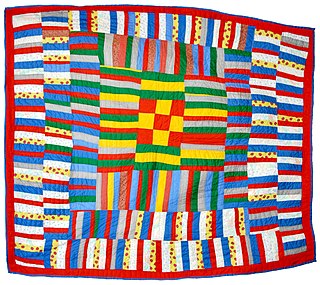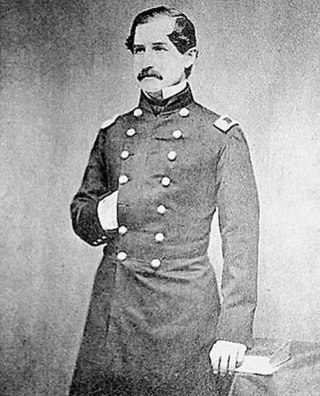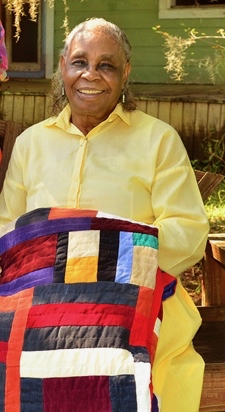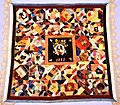
NFTY: The North American Federation for Temple Youth is the organized youth movement of Reform Judaism in North America. Funded and supported by the Union for Reform Judaism (URJ), NFTY exists to supplement and support Reform youth groups at the synagogue level. About 750 local youth groups affiliate themselves with the organization, comprising over 8,500 youth members.
The Union for Reform Judaism (URJ), formerly known as the Union of American Hebrew Congregations (UAHC) until 2003, founded in 1873 by Rabbi Isaac Mayer Wise, is the congregational arm of Reform Judaism in North America. The other two arms established by Rabbi Wise are the Hebrew Union College-Jewish Institute of Religion and the Central Conference of American Rabbis. The current president of the URJ is Rabbi Rick Jacobs.
Bill Aron is an American photographer known as an environmental portrait photographer and a chronicler of Jewish communities around the world. Aron's photographs have been exhibited in major museums and galleries throughout the United States and Israel, including the Museum of Modern Art, the International Center for Photography, the Jewish Museum, the Chicago Art Institute, the Boston Museum of Fine Arts, the Mississippi Museum of Art, the Israel Museum in Jerusalem, and the Museum of the Diaspora in Tel-Aviv.

Clementine Hunter was a self-taught Black folk artist from the Cane River region of Louisiana, who lived and worked on Melrose Plantation.

URJ Henry S. Jacobs Camp is a Jewish summer camp run by the Union for Reform Judaism (URJ), serving the Deep South. It was established in 1970.

The quilts of Gee's Bend are quilts created by a group of women and their ancestors who live or have lived in the isolated African-American hamlet of Gee's Bend, Alabama along the Alabama River.

Pushcarts and Plantations is a 1998 documentary about Louisiana Jewry from award-winning director Brian Cohen. The documentary combines interviews with historians and locals to tell the 300-year-old history of different Jewish communities found in the North, South, and New Orleans. The documentary shares anecdotes about local heroes, little known facts, and personal accounts.

Louisiana is a South Central U.S. state, with a 2020 U.S. census resident population of 4,657,757, and apportioned population of 4,661,468. Much of the state's population is concentrated in southern Louisiana in the Greater New Orleans, Florida Parishes, and Acadiana regions, with the remainder in North and Central Louisiana's major metropolitan areas. The center of population of Louisiana is located in Pointe Coupee Parish, in the city of New Roads.

The Southern Food and Beverage Museum is a non-profit museum based in New Orleans, Louisiana, with a mission to explore the culinary history of the American Southern states and to explain the roots of Southern food and drinks. Their exhibits focus on every aspect of food in the South, from the cultural traditions to the basic recipes and communities formed through food. The museum is located on the corner of O.C. Haley Boulevard and Martin Luther King Jr Boulevard in Central City, New Orleans.

John Tarrell Scott was an American sculptor, painter, printmaker, collagist, and MacArthur Fellow. The works of Scott meld abstraction with contemporary techniques infused with references to traditional African arts and Panafrican themes.
Theodore Rosengarten is an American historian.

The American Jewish Museum, or AJM, is a contemporary Jewish art museum located in Pittsburgh, Pennsylvania. A department of the Jewish Community Center (JCC) of Greater Pittsburgh, the museum is located in the Squirrel Hill JCC at the corner Forbes Avenue and Murray Avenue, in the heart of Pittsburgh's historically Jewish neighborhood. The museum was founded in 1998, and though it does not have a permanent collection, it hosts several original and traveling exhibitions each year. The AJM aims to explore contemporary Jewish issues through art and related programs that facilitate intercultural dialogue.

Abraham Myers was a military officer in the United States and Confederate States Armies.
Roland L. Freeman was an American photographer and documenter of Southern folk culture and African-American quilters. He was the president of The Group for Cultural Documentation, founded in 1991 and based in Washington, D.C.
Henry Michael Hyams was an American lawyer, planter and Democratic politician. He served as the 7th Lieutenant Governor of Louisiana from 1862 to 1864 under Governor Thomas Overton Moore during the American Civil War, when Louisiana joined the Confederate States of America. He was an advocate of slavery in the United States.

White Southerners are White Americans from the Southern United States, primarily originating from the various waves of Northwestern and Southern European immigration to the region beginning in the 16th century to the British Southern colonies, French Louisiana, the Spanish-American colonies; and the subsequent waves of immigration from Northwestern Europe, Central Europe, Eastern Europe, Southern Europe, the Caribbean, Latin America, and the Levant. A semi-uniform white Southern identity coalesced during the Reconstruction era partially to enforce white supremacism in the region. Due to post-Civil War migrations and assimilation, many white Southerners can trace their ancestry to multiple different ethno-cultural communities in the region.

Mary Lee Bendolph is an American quilt maker of the Gee's Bend Collective from Gee's Bend (Boykin), Alabama. Her work has been influential on subsequent quilters and artists and her quilts have been exhibited in museums and galleries around the country. Bendolph uses fabric from used clothing for quilting in appreciation of the "love and spirit" with old cloth. Bendolph has spent her life in Gee's Bend and has had work featured in the Philadelphia Museum of Art as well as the Minneapolis Institute of Art in Minnesota.
Gwendolyn (Gwen) Ann Magee was an African-American fiber artist. Learning to quilt in the middle of her life, Magee quickly became known in the world of fiber art for her abstract and narrative quilts depicting the African-American experience. Her work can be found in the permanent collections of the Mississippi Museum of Art, the Museum of Mississippi History, the Michigan State University Museum, and the Renwick Gallery of the Smithsonian Museum of American Art, and has been exhibited internationally.
Cecelia Tapplette Pedescleaux, also known as Cely, is an African-American quilter of traditional and art quilts, inspired by historians, other African-American quilters, and quilt designs used during the Underground Railroad to communicate messages to slaves seeking freedom. Her quilts have been shown in China, France, Washington, D.C., New Orleans, and in other locations in the United States. A solo show of 75 of her quilts were shown at the Le Musée de Free People of Color in New Orleans (2013–2014).

Jews have inhabited the Southern United States since the late 1600s and have contributed to the vibrant cultural and historical legacy of the South in many ways. Although the United States' Jewish population is more often thought to be concentrated in Northern cities, such as New York, thousands of Jewish immigrants chose to settle in the more rural Southern United States forming tight-knit religious communities and creating a unique cultural identity. Jewish immigrants came to the South from various countries, backgrounds and religious traditions within Judaism. Major Jewish communities include Memphis, Tennessee; Houston, Texas; Savannah, Georgia; Charleston, South Carolina; Charlottesville, Virginia; and Wilmington, North Carolina. Jews participated in many important events in Southern history, such as the Civil War, the World Wars, and the civil rights movement.


























